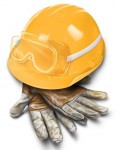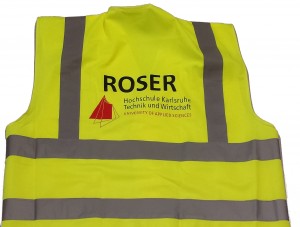
This is the second post of a two-post series on shop floor etiquette (first post here). I find this a very necessary post, as I have way too often observed visitors to the shop floor lacking manners (and occasionally, I may have lacked manners myself 🙁 ). Hence, please do not treat this post as optional, but try to incorporate it into your daily shop floor work. Being accepted on the shop floor is crucial for any successful change on the shop floor. The executive summary for both posts can be found at the end of each post.
Shop Floor Etiquette Rules (Continued)
Appreciate Their Work
Another aspect important to a good standing is to appreciate their work. On the shop floor, people are working, usually physically and often hard. If you stroll along like you are on a holiday, it will make them feel their workload even more.

Hence, take your hands out of your pockets. Having your hands in your pocket is disrespectful to people working with their hands at the same time. Also, if you are staying on one spot for a longer time, do not lean on the wall or on machines or equipment. This also looks lazy and is disrespectful against others working in the area.
Similarly, do not bring anything to eat or drink unless you are sitting down with the workers in their rest area. It will not be appreciated if you have a cup of coffee or a doughnut while the people around you have to work.
Do not overdress for the occasion. Depending on your usual attire, you may choose to dress more casually than usual. Wearing a suit and tie, ideally combined with a long list of academic degrees, will distance you from the people on the shop floor. If you come along with all your fine clothes, it looks like you are not there to work. On the other hand, if you wear a boiler suit, you may have overdone it. Find some middle ground. (See also Dress for Success in Lean Manufacturing.)

Finally, and most importantly, listen to their input! Nobody knows the processes as well as the workers. No matter whether you want to merely understand or actually to change the process, value the input of the workers. They can alert you to ideas for improvement that you would have never though of. Similarly, they can warn you about problems that you would have never expected. Naturally, not every idea from a worker is genial – but neither are yours. Sort out the good from the bad. However, by listening to them, you have increased your street credits on the shop floor.
Getting these ideas out of the workers, on the other hand, may require a bit of an effort. Workers are often not used to talk to “higher-ups” or may have had a bad experience with previous attempts. A bit of coaxing or digging may be needed to access this treasure trove of knowledge.
Get Permission Beforehand if Taking Times/Photos/Videos
Depending on the reason why you are on the shop floor, you may want to take photos or videos, or measure times using a stopwatch. Stopwatches and cameras are red flags for operators. Depending on the rules and regulations in your plant, you may even be forbidden to use them without prior permission.

For example, in many plants in Germany, the agreement of the work council is needed before you can take videos or use stopwatches. Every now and then one of my students – with best intentions – brings a stopwatch to the shop floor of his/her internship, only to face a rather angry work council member three minutes later. Similar applies to many plants in the US, often depending on the state they are in.
Plants in China or other low-cost countries often have more relaxed regulations, but this does not mean that the workers like it. I had many plant managers in China tell me that “the workers are fine with it.” Actually they are not, but they don’t dare to voice their opinion.
In any case, no matter if required by law, local rules, or not at all, make sure that the operators are informed and, if possible, have agreed to the use of videos, stopwatches, or cameras.
Follow Regulations

Of course, as a visitor you should follow the rules and guidelines of the plant. If the plant requires you to wear safety equipment, do wear the required safety equipment. ESD safety boots, safety goggles, hard hats, reflective safety vests, ear protection, and other items are there for YOUR safety. If you do not wear them, not only do you risk your own life and limb, but you also set a bad example for others.

In fact, I always have my own ESD safety boots, goggles, and vest in the trunk of my car. The latter is even printed with the logo of my university and my name, albeit I opted to skip the “Prof. Dr.” part and list myself only as “Roser.”
Similar applies to other gear that protects the machines and products from you. For example, if you visit clean rooms, wear the required overcoats, shoe slippers, hair nets, and whatever else is necessary. Hence, wear clean room garments or similar.

Also, follow other rules and guidelines. For example, in one plant making floor paneling, you were not allowed to walk across the products (except that the plant manager did it all the time – not a good example). If there are separate doors for people and doors for forklifts, use the correct door. Stay on the marked walkways, unless your guide indicates otherwise. Use pedestrian crossings if available.

Do not park in a reserved parking spot (unless it is YOUR reserved spot). Again, I know one plant manager who decided that the handicapped parking space in front of his office was his own personal parking space despite the complete lack of any handicaps on his side. He could have just changed the label on the parking spot to make it his own spot, rather than announce to everybody that the rules do not apply to him (and therefore probably not to anyone else either?).
Say Thank You and Good-bye

Finally, at the end of the visit, thank the people for their patience and assistance, and wish them a nice day. Similar to the introduction, this may be only feasible and sensible if you have worked closer with or around a small group of people. Again, depending on the local customs, you may shake hands, bow, or use whatever is normal at departure.
Follow up
Possibly, after the visit you will analyze what you have observed or measured, create some Excel spreadsheets, PowerPoint slides, or even some real results 😉 . It is common courtesy to inform the people you have worked with about the results. Of course, not the three-hour boardroom presentation, but the executive summary, or better phrased as the “operative summary” :). Use plain English (or whatever language is best) and a few graphs to show your key findings, then either forward it to the operators or even inform them in person. Naturally, keep confidential information out of this summary.

If the operators not only tolerated you, but actively helped you and participated in the project, it may be a possibility to show your appreciation through a small gift. I personally always had good experience with a bag or a bucket of gummy bears. A bucket of gummy bears cost me five dollars, but the appreciation was priceless.
Don’t Overdo It
Most of these guidelines above are common sense. You have to decide which ones apply to your situation or plant and which ones you can ignore. Following all guidelines no matter who you are may even be too much. If the plant manager announces every plant visit, it is weird. If you leave a bucket of candy just because you looked at the process, it is too much. Just use your own common sense. In case of doubt, err on the safe side and do a bit more. In any case, do not just forget it but treat the people on the shop floor as people, not as machines. Now go out and organize your industry by treating people like people.
Executive Summary
Below is the summary of the guidelines of the two posts (Part 1 is here). Not all of them apply to every person or visit, hence use your common sense.
- Announce your visit
- Introduce yourself in person
- Explain what you do and why you do it
- Do not make the work more difficult through your presence
- Do not block the workers access to wherever they have to go
- Keep an eye out for safety light barriers
- Keep your noise down
- Do not touch anything unless you really, really know what you are doing
- Be on time
- Do not take souvenirs without asking for permission
- Appreciate their work
- Take your hands out of your pockets
- Do not bring anything to eat or drink
- Do not overdress for the occasion
- Listen to their input
- Get permission beforehand for taking times/photos/videos
- Follow regulations
- Do wear the required safety equipment
- Wear clean room garments or similar
- Follow other rules and guidelines
- Say thank you and good-bye
- Follow up
- Inform the people you have worked with about the results
- Show the appreciation through a small gift

Nice post, then I would like to add: At a plant (factory), admin people usually control the visit/visitors (Who, Why, Where they go and What they watch, and When). Every person (visitor) needs the pre-approval from the plant manager (top of the plant). In the case of a shop floor visit, the plant manager needs the pre-understandings (not approval) of production line manager, foreman, etc. If the plant manager missed this procedure (usually established), and the person visited the shop floor, the line manager and/or foreman strongly complain. Of course, that’s a plant-by-plant.
Hello Osamu, nice to hear from you again. Your points are good and valid, although I think they are not so much etiquette but more safety and confidentiality within the plant.